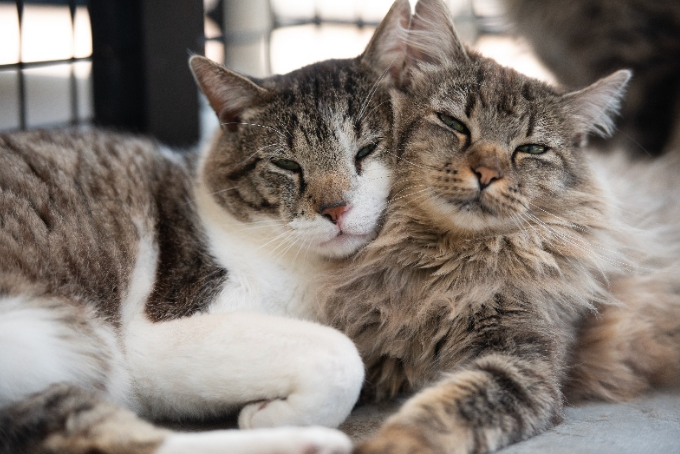August 8 is International Cat Day

From their historic reverence as sacred beings to their modern-day status as beloved pets and internet celebrities, cats continue to captivate and deeply connect with people. Thursday, August 8 is International Cat Day, which is a great way to celebrate feline companions, as well as serve as a reminder for how people everywhere can help find cats a loving home: whether through adoption or by ensuring free-roaming, community cats are safe in their natural habitat.
According to data from Best Friends Animal Society, a leading national animal welfare organization working to end the killing of cats and dogs in America’s shelters in 2025, more than 569 cats are killed in U.S. shelters every day. Cats and kittens have historically been the most at-risk populations in shelters. In 2023, over 2.2 million cats entered shelters throughout the U.S. with over 200,000 being unnecessarily killed.
"Cats, with their playful dispositions, unintentionally hilarious personalities, and affectionate nature, make wonderful pets," said Samantha Bell, cat expert, Best Friends Animal Society. "By adopting a cat, you not only gain a loving companion but also save a life and help reduce the overpopulation in shelters."
Saving the lives of cats in animal shelters is the responsibility of everyone in every community. Below are a few ways to help keep cats healthy and happy and out of shelters:
- Adopt: Studies show that cat companionship can be beneficial for physical and mental health, help alleviate social isolation, as well as reduce stress. A path to joy and well-being close could be as close as adopting a cat from a local animal shelter.
- Make it a double: When adopting a new cat, consider bringing home two. Cats and kittens are very social and having a feline friend with them from the start can have behavioral benefits. Plus, that’s two lives saved instead of just one.
- Foster: Not ready to adopt? Fostering a cat or a kitten is a great option that provides an animal with the space and time to decompress while acclimating to life in a home. Many shelters with foster programs will provide supplies and cover medical expenses while that cat or kitten is in a foster home. By providing cats with a temporary home until they can be adopted, shelters and rescuers have the space to take in more felines in need. Many organizations also offer foster-to-adopt programs where individuals can see if a pet is right for their home before adopting.
- Contribute: Animal shelters in all communities could use some extra support these days from donating supplies and pet food to volunteering to feed, clean or socialize cats to help them get adopted.
- Embrace community cats: =Some cats prefer to live outdoors and do not need to be taken to local shelters. Instead, communities can participate in Trap-Neuter-Vaccinate-Return (TNVR) programs. An essential step in achieving no-kill, TNVR is the most humane and cost-effective way to help reduce cat populations through preventing unwanted litters from unowned cats.
- Found kittens?: When kittens are found outside, the best option isn’t always to bring them to a shelter, especially when many are currently at or over capacity. Instead, check-in on the kittens for 10-12 hours to see if their mom is still present. If she is, leave them until they are about 2 months old when it’s safe to trap the mother and kittens so they can be spayed, neutered, and returned back to their outdoor home.
To learn more about Best Friends, visit bestfriends.org and follow Best Friends on Instagram at @bestfriendsanimalsociety, TikTok at @bestfriendsanimalsociety and Facebook at Facebook.com/BestFriendsAnimalSociety.